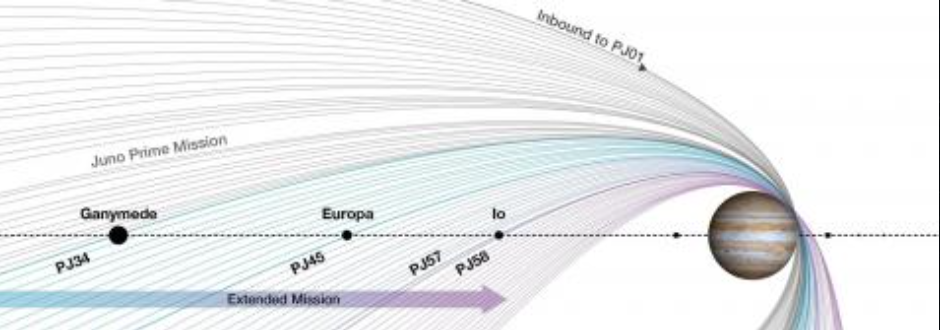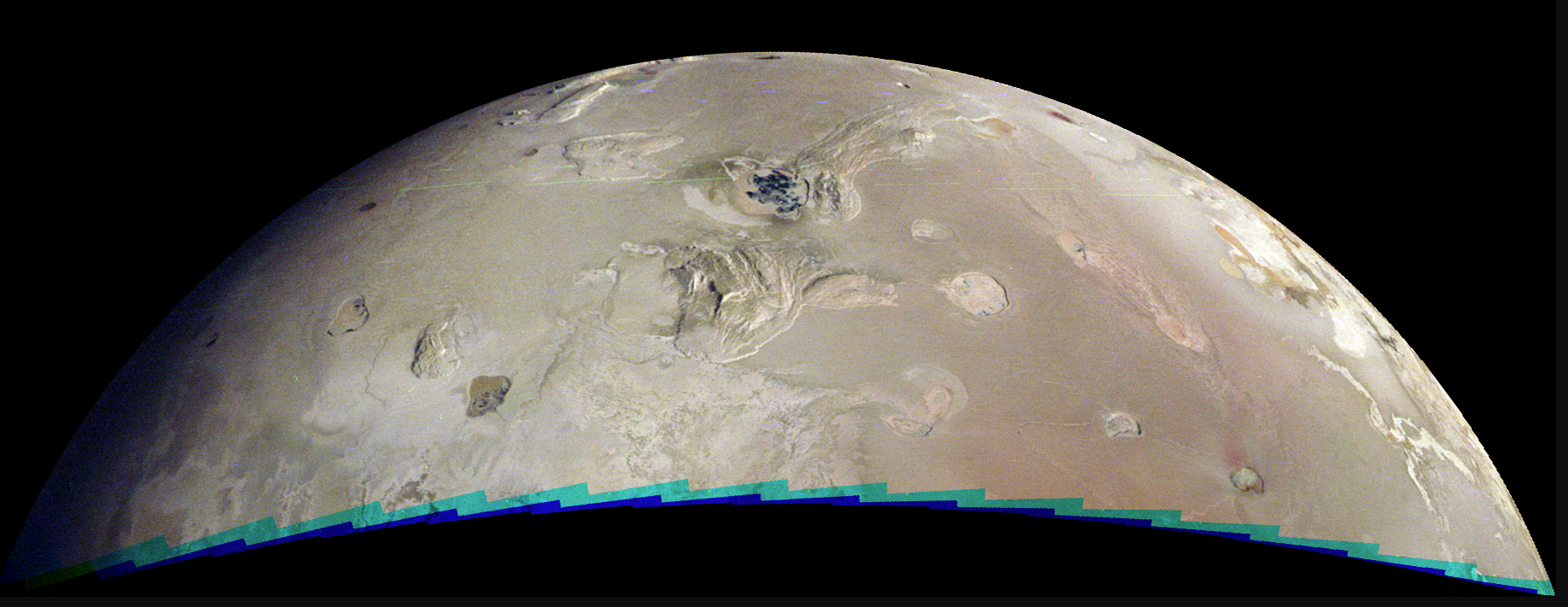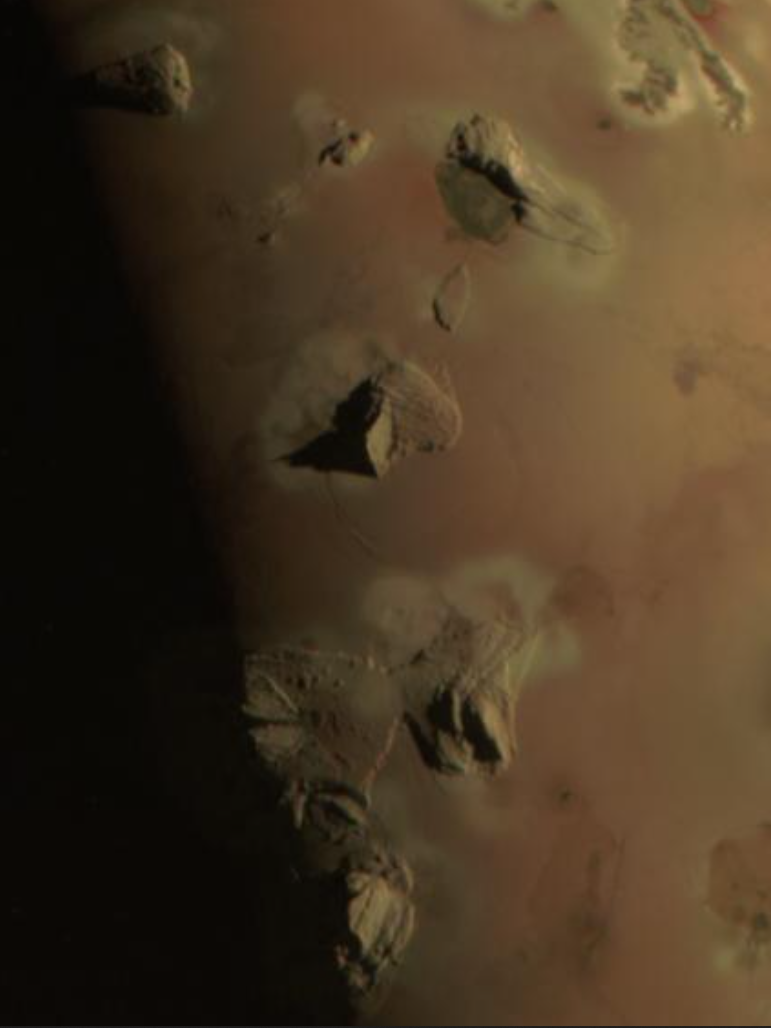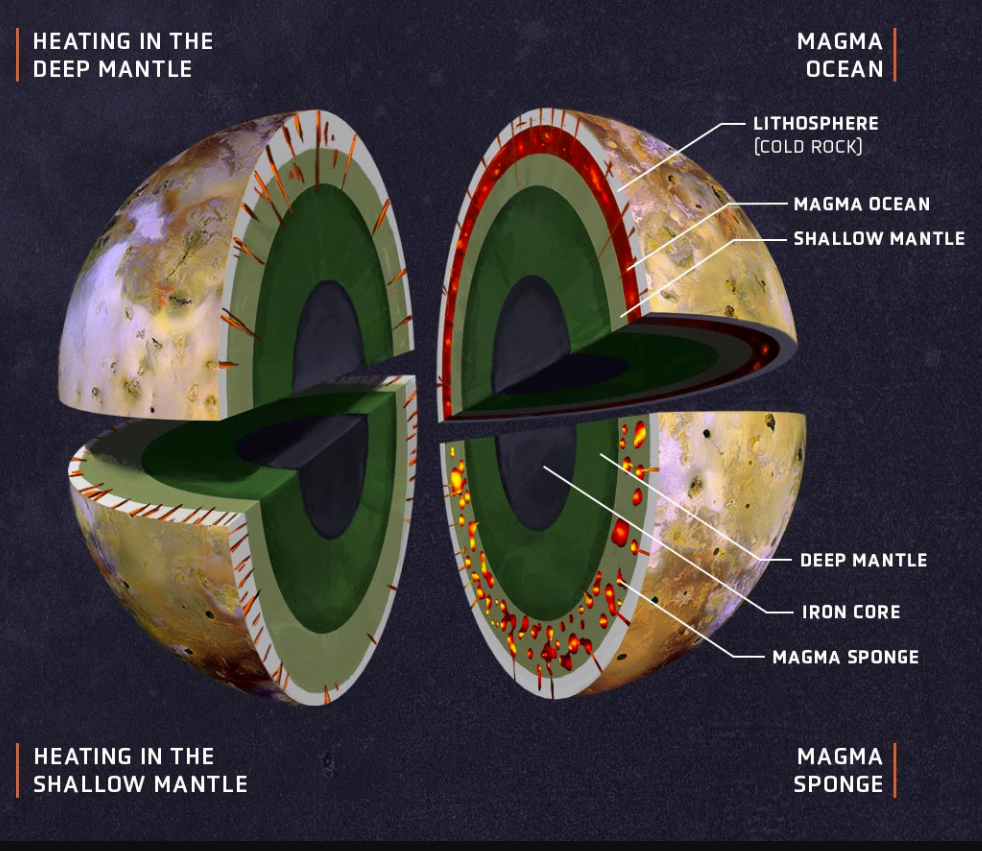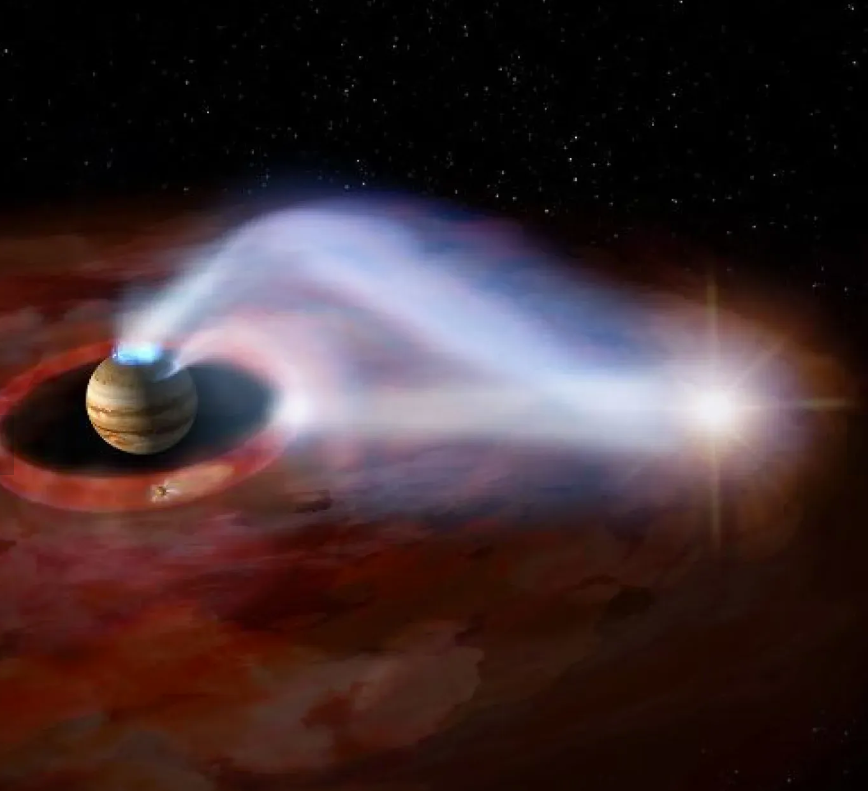Scott Bolton on Io, the Most Volcanically Active Body in the Solar System
Listen to the podcast here, or wherever you get your podcasts.
Juno is the latest space probe to visit Jupiter. Since its arrival in 2017, its orbit around the giant planet has progressively shifted to take it close to Jupiter’s moons and rings. In December 2023 and February 2024, it flew by the innermost Galilean Moon, Io, approaching within a distance of only 1,500 km. This enabled it to capture high-resolution imagery of Io’s constantly changing surface, including hitherto unseen regions near its poles. As discussed in the podcast, Juno is equipped with a microwave instrument that enables it to look slightly below the moon’s surface into its lava lakes, as well as a suite of magnetometers to study Jupiter’s giant magnetosphere and its interaction with Io.
Scott Bolton’s research focuses on Jupiter and Saturn and the formation and evolution of the solar system. He has led a number of science investigations on the Cassini, Galileo, Voyager, and Magellan missions and is the Principal Investigator of the Juno Mission. He is Director of the Space Sciences Department at Southwest Research Institute in San Antonio, Texas.
Courtesy of Southwest Research Institute
Podcast Illustrations
Jupiter’s Galilean Moons
The Galilean moons Io, Europa, Ganymede, and Callisto (left to right) to relative scale and in order of increasing distance from Jupiter. Jupiter has a total of 95 recognized moons, the latest discovered in 2017. There are four moons with orbits interior to Io, and the rest lie beyond Callisto.
NASA/JPL/DLR
Scientific Instruments on the Juno Spacecraft
Diagram showing the location of Juno’s instruments. In the podcast, Bolton discusses the imagery captured by the visible-light camera (JunoCam), the particle and magnetic field measurements with the energetic-particle detector (JEDI), the plasma waves instrument (Waves), and the fluxgate magnetometer (FGM), as well as the novel use of the microwave radiometer (MWR) to look at Io’s surface and perhaps below the surface of its lava lakes as well.
NASA/JPL
Juno’s Orbit
As mentioned in the podcast, without the need for any thrusting from Juno’s rocket engines, asymmetry in Jupiter’s gravitational field rotates and shortens Juno’s orbit, moving it inwards to successively approach each of the Galilean moons. The orbit has given us our first-ever views of the moons’ polar regions. Each of the orbits is labeled PJ for perijove, the point of closest approach to the planet.
NASA/JPL-Caltech/SwRI
Imagery of Io’s Surface Captured by Juno’s Visible-Light Camera
Color-enhanced image of Io taken by Juno on February 3, 2024. As discussed in the podcast, constant volcanic activity produces lava flows and lakes that change between successive fly-bys, which at this stage of Juno’s mission are 35 days apart. The entire surface is continually replaced by volcanism every few thousand years.
NASA/JPL-Caltech/SwRI/MSSS/Thomas Thomopoulos
Io's leading hemisphere taken on February 3, 2024, from Juno’s closest approach, 1,500 km from Io’s surface. In this image, the surface is lit by light reflected off Jupiter’s surface. At top center, which is near Io's equator, is the large volcano Shamshu Patera with a patchwork of lava flows. Shamshu Patera is surrounded by several non-volcanic mountains. At center right is a feature that is thought to be a lava lake. Pixel scale is 1 km/pixel; Io’s diameter is 3,643 km.
NASA/SwRI/JPL/MSSS/Jason Perry
The first-ever image of Io’s south polar region, captured from a distance of 10,250 miles during Juno's 60th fly-by of Jupiter on April 9, 2024.
NASA/JPL-Caltech/SwRI/MSSS. Image processing: Gerald Eichstädt/Thomas Thomopoulos (CC BY)
Loki Patera — Io’s Largest Lava Lake
A comparison of Io's appearance on December 30, 2023, and February 3, 2024. The later image shows strong specular reflections from several features that appear dark in the earlier image.
Artist’s concept of Loki Patera, a lava lake on Jupiter’s moon Io, made using data from the JunoCam imager. With multiple islands in its interior, Loki is a depression filled with magma and rimmed with molten lava. As Bolton mentions in the podcast, the specular reflection indicates a smooth surface that may be a recently formed glass-like crust on a newly erupted and rapidly cooled lava lake.
NASA/JPL-Caltech/SwRI/MSSS
Superposition of Loki Patera onto Iceland. With a width of 230 km, Loki Patera is the largest lava sea in the solar system.
Jesper Sandberg
Non-Volcanic Mountains
The image shows mountains on Io’s surface, some much taller than Mount Everest. They appear to be tilted and fractured slabs of crust formed tectonically rather than by volcanism.
NASA / SwRI/ MSSS / Andrew R Brown
Based on data collected during Io fly-bys in December 2023 and February 2024, this animation is an artist’s concept of a feature that the mission science team nicknamed “Steeple Mountain.”
NASA/JPL-Caltech/SwRI/MSSS
These composite views depicting volcanic activity on Io were generated using both visible light and infrared data collected by Juno during fly-bys on Dec. 14, 2022, (left), and March 1, 2023.
NASA/JPL-Caltech/SwRI/ASI/INAF/JIRAM
Models of Io’s Interior
Juno’s infrared and visible-light mapping of the entire surface of Io, as well as the gravity studies, will help distinguish the various models that have been proposed for Io’s interior. In the podcast, Bolton discusses the difference between a magma ocean model (top right) and other models in which there are just pockets of magma below the surface.
Johns Hopkins University APL, University of Arizona, Mike Yakovlev, SciTechDaily
Jupiter’s Rings
Schema of Jupiter’s rings, which lie close to Jupiter, well within the orbit of Io. The main and halo rings mainly consist of dust ejected from the moons Metis, Adrastea.
NASA/JPL/Cornell University
Jupiter’s main dust ring captured by Juno from within the ring as Juno made its first data-collecting orbit around Jupiter in August 2016. The ring lies about 55,000 km from Jupiter’s surface, is 6,500 km wide, and 30-300 km thick. In the podcast, Bolton mentioned that Juno may fly through the rings even though the dust they contain is hazardous for the space probe. Jupiter’s rings are much fainter than those of Saturn and were only discovered by the Voyager 1 space probe in 1979.
NASA/JPL-Caltech
Jupiter’s Aurora
In the podcast, Bolton discusses Jupiter’s huge magnetosphere, part of which is filled with charge particles emitted by the volcanoes on Io. These spiral along magnetic field lines toward Jupiter’s poles, where they create a zone of intense aural emission, which appears as a bright spot in the aurora. In this artist’s rendering, Io is shown as the star-like object at right so as to indicate the high flux of largely invisible charged particles it emits.
RIKEN
UV image from the Hubble Space Telescope showing the glowing aurora on Jupiter’s north pole. The aurora is generated, as on Earth, by charged particles moving and accelerating rapidly in the planet’s magnetic field. The various spots in the aurora result from the channeling of charged particles emitted by Io’s volcanoes, as well as by the impact of Jupiter’s rapidly rotating and intense magnetosphere on the surfaces of Ganymede and Europa, as Bolton mentions in the podcast.
ASA/ESA, John Clarke (University of Michigan)




